BRUSSELS RETAINS GLITTER
Page 70
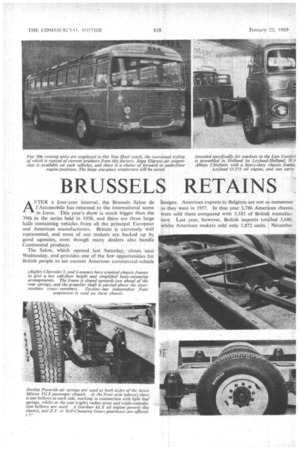
Page 71
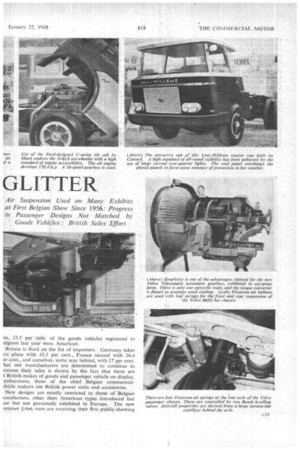
Page 72
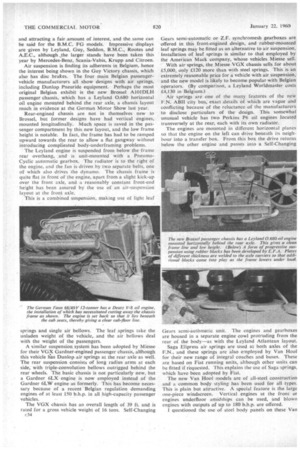
Page 73
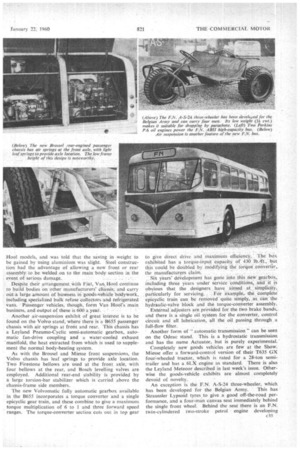
Page 74
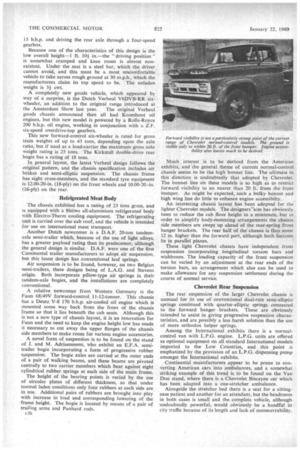
If you've noticed an error in this article please click here to report it so we can fix it.
AFTER a four-year interval, the Brussels Salon de l'Autornobile has returned to the international scene in force. This year's show is much bigger than the 39th lin the series held in 1956, and there are three large halls containing vehicles from all the principal European and American manufacturers. Britain is extremely well represented, and most of our makers are backed up by good agencies, even though many dealers also handle Continental products.
The Salon, which opened last Saturday, closes next Wednesday, and provides one of the few opportunities for British people to see current American commercial-vehicle designs. American exports to Belgium are not as numerous as they were in 1957. In that year 3,786 American chassis were sold there compared with 3,183 of British manufacture. Last year, however, British imports totalled 3,686. whilst American makers sold only 1,872 units. Neverthe :ss, 23.5 per cent, of the goods vehicles registered in elgium last year were American.
Britain is third on the list of importers. Germany takes rst place with 43.3 per cent., France second with 26.4 er cent., and ourselves, some way behind, with 17 per cent. 'hat our manufacturers are determined ta continue to icreasetheir sales is shown by the fact that there are 4 British makes of goods and passenger vehicle on display. urthermore, three of the chief Belgian commercial!hide makers use British power units and accessories. New designs are mostly restricted to those • of Belgian ianufacture, other than American types introduced last 3ar but not previously exhibited in Europe. The new on-imer. *-ton vans are receiving their first pnblic.showing and attracting a fair amount of interest, and the same can be said for the B.M.C. FG models. Impressive displays are .given by Leyland, Guy, Seddon, B.M.C., Rootes and A.E.C., although ,the larger stands have been taken this year by Mercedes-Benz, Scania-Vabis, Krupp and Citroen.
Air suspension is finding its adherents in Belgium, hence the interest being shown in the Guy Victory chassis, which also has disc brakes. The four main Belgian passengervehicle manufacturers all show designs with air springs, including Dunlop Pneuride equipment. Perhaps the most original Belgian exhibit is the new Brossel A101 DLH passenger chassis, which has a Leyland 0.680 horizontal oil engine mounted behind the rear axle, a chassis layout much in evidence at the German Motor Show last year.
Rear-engined chassis are not in themselves new to Brossel, but former designs have had vertical engines, mounted longitudinally. Much space is saved in the passenger compartment by this new layout, and the low frame height is notable. In fact, the frame has had to be ramped upward towards the rear to allow a flat gangway without introducing complicated body-underframing problems.
The Leyland engine is suspended from below the frame rear overhang, and is unit-mounted with a PneumoCyclic automatic gearbox. The radiator is to the right of the engine, and the fan is driven by two separate belts, one of which also drives the dynamo. The chassis frame is quite fiat in front of the engine, apart from a slight kick-up over the front axle, and a reasonably constant front-end height has been assured by the use of an air-suspension layout at the front axle.
This is a combined suspension, making use of light leaf springs and single air bellows. The leaf springs take the unladen weight of the vehicle, and the air bellows deal with the weight of the passengers.
A similar suspension system has been adopted by Miesse for their VOX Gardner-engined passenger chassis, although this vehicle has Dunlop air springs at the rear axle as well.
The rear suspension consists of long radius arms at each side, with triple-convolution bellows outrigged behind the rear wheels. The basic chassis is not particularly new, but a Gardner 6LX engine is now employed instead of the Gardner 6LW engine as formerly. This has become neces sary because of a recent Belgian regulation demanding engines of at least 150 b.h.p. in all high-capacity passenger vehicles.
The VGX chassis has an overall length of 39 ft. and is rated for a gross vehicle weight of 16 tons. Self-Changing c34 Gears semi-automatic or Z.F. synchromesh gearboxes are offered in this front-engined design, and rubber-mounted leaf springs may be fitted as an alternative to air suspension. Installation of leaf springs is similar to that employed by the American Mack company, whose vehicles Miesse sell.
With air springs, the Miesse VGX chassis sells for about f5,000, only £120 more than with steel springs. This is an extremely reasonable price for a vehicle with air suspension, and the new model is likely to become popular with Belgian operators. (By comparison, a Leyland Worldmaster costs £4,130 in Belgium.) Air springs are one of the many features of the new F.N. ABII city bus; exact .details of which are vague and conflicting because of the reluctance of the manufacturers to disclose particulars of the design. This somewhat unusual vehicle has two Perkins P6 oil engines located transversely at the rear, each with its own radiatOr.
The engines are mounted in different horizontal planes so that the engine on the left can drive beneath its neighbour into a transfer box. From this box the drive returns below the other engine and passes into a Self-Changing Gears semi-autbmatic unit. The engines and gearboxes are housed in a separate engine cowl protruding from the rear of the body—as with the Leyland Atlantean layout.
Saga Erlipress air springs are used at both axles of the RN., and these springs are also employed by Van Hoot for their new range of integral coaches and buses. These are based on Fiat running units, although other units can be fitted if requested. This explains the use of Saga springs, which have been adopted by Fiat.
The new Van Hoot models are of all-steel construction and a common boy styling has been used for all types. This is plain but attractive. A special feature is the large one-piece windscreen. Vertical engines at the front or engines underfloor amidships can be used, and blown engines with outputs of up to 180 b.h.p. are °tiered.
I questioned the use of steel body panels on these Van
Hool models, and was told that the saving in weight to be gained by using aluminium was slight. Steel construction had the advantage of allowing a new front or rear assembly. to.be welded on to the main.body section in the
event of serious damage, . _ Despite their arrangement with Fiat, Van, Hool continue to build bodies On other manufacturers' chassis; and carry ont_a large amount of bilsinesS in 'gods-vehicle bOdyWork, ineluding specialized bulk refuse colleetcirs and fefrigerated vans. Passenger Vehicles, though, form Van Hool's•main business, and output of these is 600 a year. • • Another air-suspension exhibit of great interest is to be found on the Volvo stand, where there is a.B655 passenger chassis with air springs at front and rear. This chassis has a Leyland Pneumo-Cyclic semi-automatic gearbox, automatic fan-drive coupling and a water-cooled exhaust 'manifold, the heat extracted from which is used to supplement the normal body-heating system.
As with the Brossel and Miesse front suspensions, the Volvo chassis has leaf springs to provide axle location. Two Firestone bellows are used at the front axle, with four bellows at the rear, and Bosch levelling valves are employed. Additional rear-end stability is provided by a large torsion-bar stabilizer which is carried above the chassis-frame side members.
The new Volvomatic fully automatic gearbox available in the B655 incorporates a torque converter and a single epicyclic gear train, and these combine to give a maximum torque multiplication of 6 to 1 and three forward speed ranges. The torque-converter section cuts out in top gear
to give direct drive and maximum efficiency. The box exhibited has a torque Input capacity Of 430 lb 'ft but this could he doubled by modifying the torque converter, the Manufacturers claim.
Six years' development has gone into this new gearbOx, including three years under service .cOnditicins, and it is obvious that the designers have aimed at simplicity. particularly for servicing. . For example,the complete epicyclic train can be removed quite siMply, as can the hydraulic-valve block and the torque-conyerter assembly.
External .adjusters are proVided for the two brake bands,. and there is a single oil system for the converter, control Circuit and all lubrication, all the oil passing through a full-flow filter.
Another form of " automatic transmission" can be seen on the Ocleac stand. This is a hydrostatic transmission and has the name Actuator, but is purely experimental.
Completely new goods vehicles are few at the Show. Miesse offer a forward-control version of their T635 GX foue-wheeled tractor, which is rated for a 28-ton semitrailer and has a r6LX engine as standard. There is also the Leyland Meteoor described in last week's issue. Otherwise the goods-vehicle exhibits are almost completely devoid of novelty.
An exception is the F.N. A-S-24 three-wheeler, which has been developed for the Belgian Army. This has Straussler Lypsoid tyres to give a good off-the-road performance, and a four-man canvas seat immediately behind the single front wheel. Behind the seat there is an F.N. twin-cylindered two-stroke petrol engine developing 15 b.h.p. and driving the rear axle through a four-speed gearbox.
Because one of the characteristics of this design is the low overall height-1 ft. 101 in.—the "driving position" is somewhat cramped and knee room is almost nonexistent. Under the seat is a steel bar, which the driver cannot avoid, and this must be a most uncomfortable vehicle to take across rough ground at 30 m.p.h., which the manufacturers claim its top speed to be. The unladen weight is 31 cwt.
A completely new goods vehicle, which appeared by way of a surprise, is the Dutch Verheul V6DVB-RR sixwheeler, an addition to the original range introduced at the Amsterdam Show last year. The original Verheul goods chassis announced then all had Krombout oil engines, but this new model is powered by a Rolls-Royce 200 b.h.p. oil engine, working in conjunction with a Z.F. six-speed overdrive-top gearbox.
This new forward-control six-wheeler is rated for gross tram weights of up to 45 tons, depending upon the axle ratio, but if used as a load-carrier the maximum gross solo weight rating is 25 tons. The Kirkstall double-drive rear bogie has a rating of 18 tons.
In general layout, the latest Verheul design follows the original pattern, and the chassis specification includes air, brakes and semi-elliptic suspension. The chassis frame has eight cross-members, and the standard tyre equipment is 12.00-20-in. (18-ply) on the front wheels and 10.00-20.-in. (16-ply) on the rear.
Refrigerated Meat Body
The chassis exhibited has a rating of 23 tons gross, and is equipped with a Heiwo all-aluminium refrigerated body with Electro-Therm cooling equipment. The refrigerating unit is carried over the cab roof, and the vehicle is intended for use on international meat transport.
Another Dutch newcomer is a D.A.F. 20-ton tandemaxle semi-trailer which, because of the use of light alloys, has a greater payload rating than its predecessor, although the general design is similar. D.A.F. were one of the first Continental trailer manufacturers to adopt air suspension, but this latest design has conventional leaf springs.
Air suspension is to be found, however, on two Belgian semi-trailers, these designs being of L.A.G. and Stevens origin. Both incorporate pillow-type air springs in their tandem-axle bogies, and the installations are completely conventional.
A relative newcomer from Western Germany is the Faun 68/49V forward-control 11-12-tonner. This chassis has a Deutz V-8 170 b.h.p. air-cooled oil engine which is mounted some way back from the front of the, chassis Trame so that it lies beneath the cab seats. Although this is not a new type of chassis layout, it is an innovation for Faun and the need to keep the engine height low has made it necessary to cut away the upper flanges of the chassis side members to make room for various engine accessories.
A novel form of suspension is to be found on the stand of J. and M. Adriaenssens, who exhibit an E.F.A. semitrailer bogie incorporating a form of progressive rubber suspension. The bogie axles are carried at the outer ends of a pair of walking beams, and these beams are pivoted centrally to two carrier members which bear against eight cylindrical rubber springs at each side of the main frame.
The height of the bearing points is varied by the use of circular plates of different thickness, so that under normal laden conditions only four rubbers at each side are in use. Additional pairs of rubbers are brought into play with increase in load and corresponding lowering of the 'frame height. The bogie is located by means of a pair of trailing arms and Panhard rods.
c36 Much interest is to be 'derived from the American exhibits, and the general theme of current normal-control chassis seems to be the high bonnet line. The ultimate in • this direction is undoubtedly that adopted by Chevrolet. The bonnet line on these models is so high as to restrict forward visibility to no nearer than 20 ft. from the front bumper. As might be expected, such a bulky bonnet and high wing line do little to enhance engine accessibilty.
An interesting chassig layout has been adopted for the lighter Chevrolet models. The designers'aim has obviously been to reduce the cab floor height to a minimum, but in order to simplify body-mounting arrangements the chassis side members are swept up ahead of the rear-spring front hanger brackets. The rear half of the chassis is thus some 12 in. higher than the forward part, although both gections lie in parallel planes.
These light Chevrolet chassis have independent front suspension incorporating longitudinal torsion bars and wishbones. The loading capacity of the front suspension can be varied by an adjustment at the rear ends of the torsion bars, an arrangement which also can be used to make allowance for any suspension settlement during the course of normal service.
Chevrolet Rear Suspension
The rear suspension of the larger Chevrolet chassis is unusual for its use of conventional dual-rate semi-elliptic springs combined with quarter-elliptic springs connected to the forward hanger brackets. These are obviously intended to assist in giving progressive suspension characteristics, and are possibly a less harsh solution than the use of more orthodox helper springs.
Among the International exhibits there is a normal control van with L.P.G. engine. L.P.G. units are offered as optional equipment on all standard International models imported to the Low Countries, and this point is emphasized by the provision of art L.P.G. dispensing pump amongst the International exhibits.
Continental manufacturers appear to be prone to converting American cars into ambulances, and a somewhat striking example of this trend is to be found on the Van Dun stand, where there is a Chevrolet Biscayne car which has been adapted into a one-stretcher ambulance. Alongside the stretcher bed there is a seat for a sitting case patient and another for an attendant, but the headroom in both cases is small and the, complete vehicle, although undoubtedly powerful, would obviously be a handful in city traffic because of its length and lack of manceuvrability.












































































































































